Our partner Lindblad Expeditions’ experience in the Galapagos Islands began with bringing the very first group of international travelers to the islands in 1967. At the time, the islands were home to a small group of transplants—people from mainland Ecuador, international scientists, European expats and explorers who followed in the wake of the likes of Charles Darwin and Alexander von Humboldt.
Air transport to the archipelago became a reality in 1969. In the years that followed, tourism rapidly replaced fishing; small-scale, low-yield farming; tortoise-oil refineries; salt mines; and sugar cane plantations as the main industry of the islands. Now, it’s incumbent on those tourists (and travel providers like Natural Habitat Adventures and Lindblad Expeditions) to make sure their pilgrimages to this unique ecosystem help rather than hurt the people and wildlife that call the Galapagos home through conservation and community initiatives.
Everyday Life in the Islands
The Galapagos Islands present unique difficulties. Fresh water is always in short supply, and electricity traditionally comes from generators powered by diesel fuel. Most food, medical supplies and building materials have to be imported, and there is a delicate balance between the human population and the wildlife.
Presently, the entire population of around 30,000 people in the Galapagos Islands live on four inhabited islands. More than 80% of the total income comes from the influx of visitors that make the journey to the archipelago.
Although tourism brings more explorers each year, the people who live on the islands still struggle to secure sustainable livelihoods.
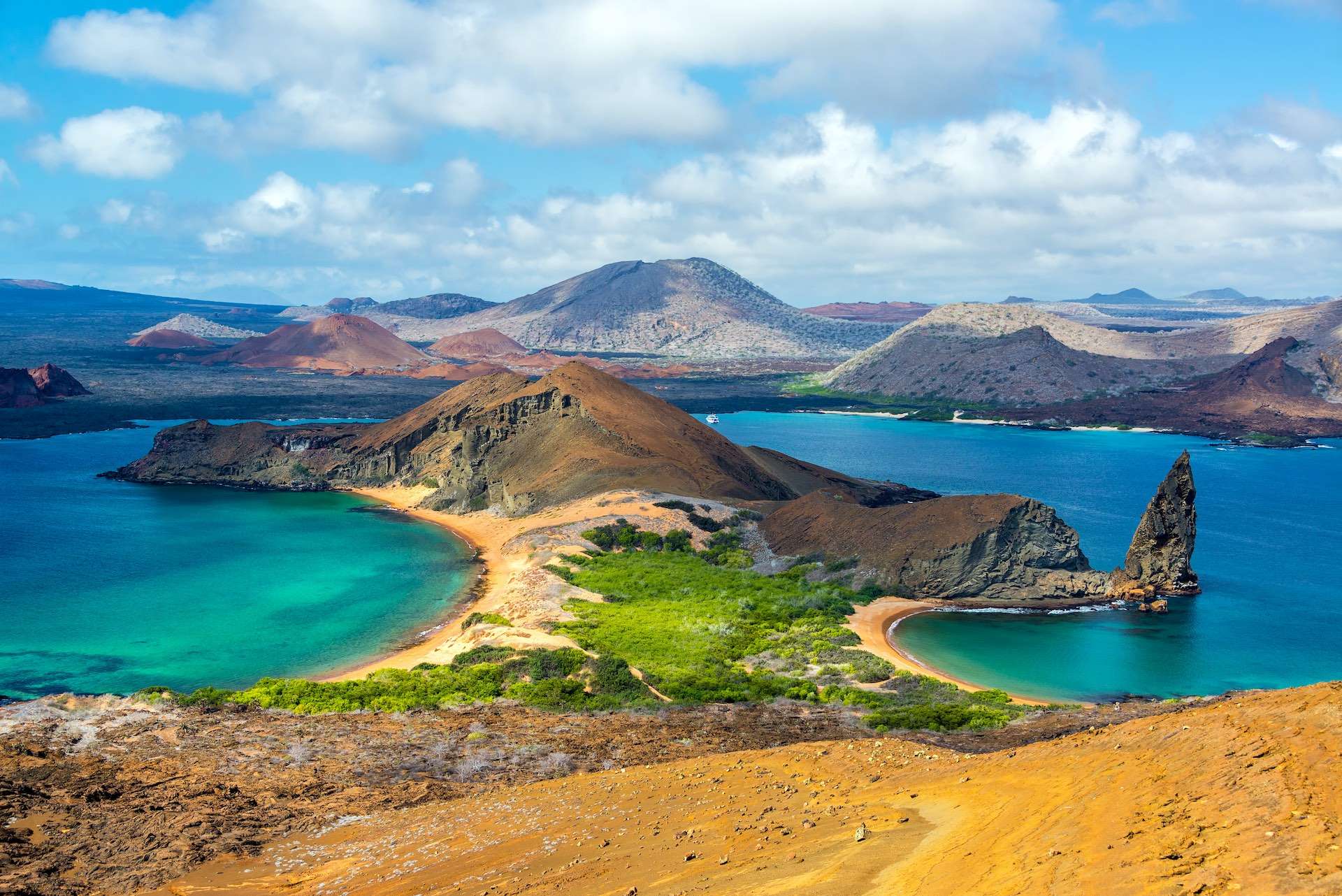
Those who fish must adhere to strict rules and changing timetables about where and when to catch different species. Although these regulations are important to help protect and maintain the fragile underwater ecosystem, they pose a challenge to those trying to earn a living from the sea.
Farming presents different obstacles. Little rainfall and invasive species hinder the ability to grow common crops found elsewhere. The volcanic landscape and lack of space further prohibit growth. Coffee is the main export that yields fruit (literally—coffee beans are actually the seeds of small red fruits called coffee cherries!), with farmers in the Galapagos supplying the likes of both mega chains like Starbucks and small-batch specialty coffee roasters abroad.
Creatively Making a Difference
In 2007, Lindblad Expeditions and National Geographic established the Lindblad Expeditions-National Geographic Artisan Fund. The brainchild of Sven Lindblad, the company’s founder, the endowment creates new paths toward including the oft-overlooked Galapagos community in the proceeds that tourism gathers.
The fund established the Glass Adaptive Reuse and Paper to Pearls projects. Each gave rise to new outlets for artists and innovative ways for the people of the islands to earn a living.
Glass Adaptive Reuse Project
The Glass Adaptive Reuse Project began in 2008, when workshops by glass-blowing artist John Gilvey of Hudson Beach Glass in New York taught local artists, including Clovis Patiño, how to fashion original pieces of art from recycled bottles. Lindblad director of artisan development, Stacy Rivett, who has a background in poverty alleviation through handcraft development, worked with the community to facilitate the meetings and provided the specialty equipment required to do the work.
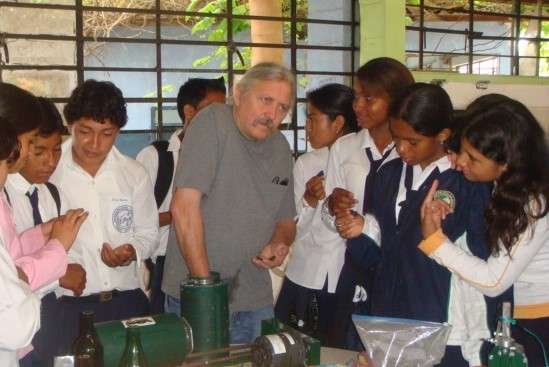
John Gilvey teaches a workshop at the Glass Adaptive Reuse Project © Lindblad Expeditions
The artists use the endemic species of the Galapagos as inspiration, turning discarded glass bottles into colorful drinking glasses and candle holders etched with blue-footed boobies and sea lions. Other works transform bottles into lamps adorned with sea turtles and colorful mobiles made from shaped pieces of sea glass. Many restaurants and resorts on the inhabited islands also use glassware made by the Glass Adaptive Reuse Project.
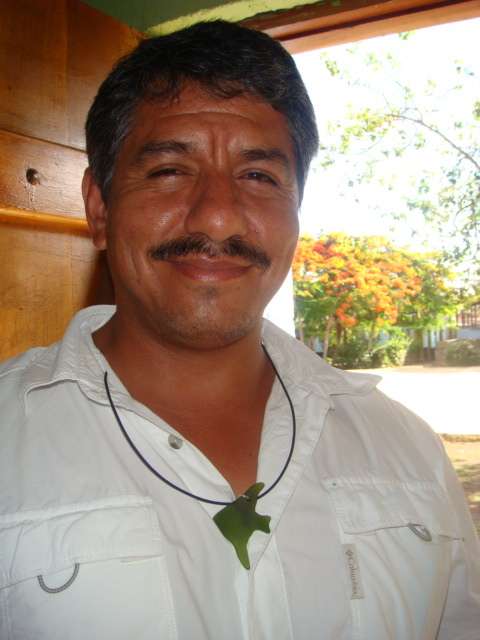
Student from the Glass Adaptive Reuse Project wearing his handiwork © Lindblad Expeditions
Aside from helping address the never-ending problem of what to do with garbage in the Galapagos, the project bridges the gap caused by the lack of material for artists to work with in the islands. Refuse gets shipped to the mainland, as there is nowhere to put it in the tiny island chain. Laws ban people from using or taking traditional materials like seashells, stones and native wood on the islands. Recycled glass presents a valuable means for artists to share their gifts with those who visit.
An added benefit of the workshops, apart from the art produced, is that the medium continues to inspire others as word spreads. New studios opened on San Cristobal and Santa Cruz islands, and Clovis Patiño now works with coastal villages on the mainland, leading workshops for locals there. This helped in the aftermath of a devastating earthquake in 2016, providing a small step toward rebuilding an economy reduced to rubble.
Paper to Pearls Project
The Paper to Pearls Project recycles paper into beaded jewelry. Now sold in more than half of the shops on Santa Cruz, the main hub for tourists in the central islands, the original works of art have a legacy of their own.
The enterprise was founded in 2011 by Barbara Moller and led by Sarah Akot, a Ugandan paper beadmaker who visited the Galapagos and held training and mentoring workshops for local women to teach them the craft. Local artists use discarded paper (including trip brochures) to hone their skills, then they visit ships like the National Geographic Islander II when they are in port to exhibit their wares firsthand.
Akot’s impact goes beyond the art she inspired; the community also named a school in her honor after her untimely death in 2013.
The LEX-NG Artisan Fund is sustainable, as 5% of all the sales from the fleet’s shops worldwide go directly back to the endowment. The ships’ stores sell the works of local artists, and Rivett connects people from the different destinations that Lindblad ships visit with each other, in an effort to foster international collaboration.
The Galapagos Islands Relief Fund
Lindblad Expeditions and Island Conservation, a non-profit dedicated to preventing extinctions, came together in 2020 to create the Galapagos Islands Relief Fund, The initiative’s goal is to address the stark effects of COVID-19 on the people who live on the islands. Lindblad reached out to past clients who had journeyed to the islands, and matches every dollar donated 3:1.
The fund provides money to the Fundación Un Cambio Por La Vida, a local non-profit. FUNCAVID facilitates microloans to local businesses that include restaurants, coffee farmers and cleaning companies in the three main inhabited islands. The emergency relief also provides critical help to families in need, education facilities and conservation initiatives that were left high and dry as a result of the pandemic.
So far, almost $300,000 of a $500,000 goal has been raised, and $215,000 has been dispersed in loans ranging between $400 and $5,000.
Adventure Gear Donations
Snorkels, fins, wetsuits, kayaks—Nat Hab goes through a lot of gear on our Galapagos trips! Although we upgrade our gear frequently, much of our old gear is still functional when we’re ready to retire it, so rather than send it to a landfill, Nat Hab donates this high-quality, gently used gear to local Galapagos communities. From schools to community groups to friends and families of our staff and guides, we’re thrilled to help locals get out and explore their incredible environment, encouraging them to become stewards for conservation.
Coffee and Conservation
A model for sustainable construction and green design, Montemar farm in the Santa Cruz Highlands was built by former Nat Hab Expedition Leader Roberto Plaza and his family. They planted several varieties of organic arabica coffee in an abandoned pasture, applying biodynamic practices to improve the soil, deter invasive species and keep the plants healthy. Proceeds from the coffee they produce support the rehabilitation of ecosystems for Galapagos tortoises that graze on the farm.
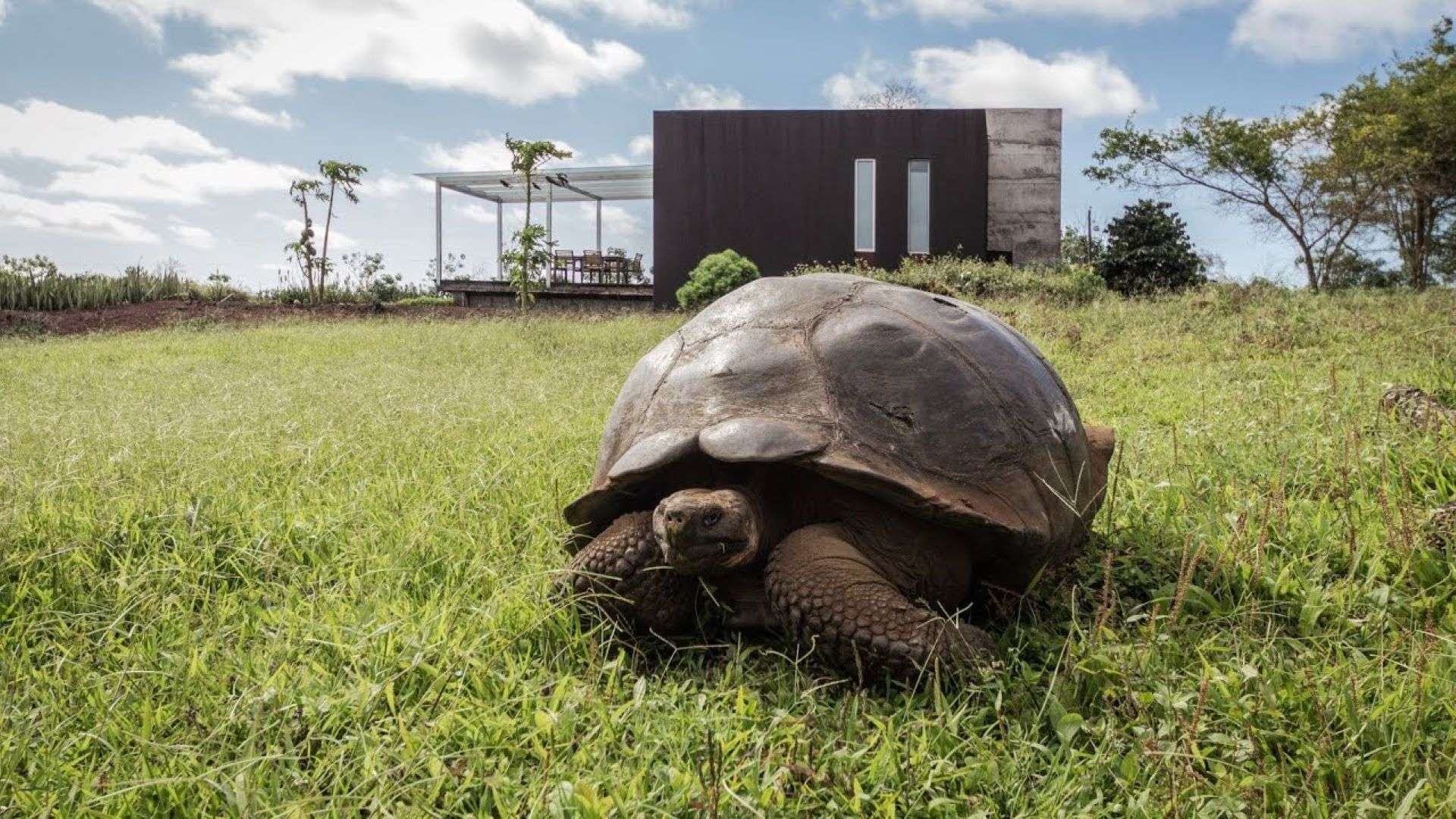
© Montemar
Our Nat Hab travelers visit this off-the-grid retreat to learn about local conservation and restoration practices—and perhaps take home a few ideas and inspiration to make eco-friendly improvements back home. Nat Hab purchases a bag of Montemar’s coffee for each guest to take back with them, further supporting the farm’s sustainability mission.
The Charles Darwin Foundation
Lindblad Expeditions has been involved in core aspects of conservation in the Galapagos Islands since the 1960s. Father and son Eric and Lars Lindblad funded the first park ranger position in Galapagos National Park, as well as supporting the work of the Charles Darwin Foundation. The CDF is the scientific advisor of the Galapagos Islands, established in 1959, the same year the islands officially became a national park. (Yes, 97% of the land area in the Galapagos is designated as a national park!)
CDF directly influences policy in the park through its operative branch, the Charles Darwin Research Station, carrying out studies and identifying urgent conservation issues. The Lindblads facilitated early measures recommended by the organization, like instituting a national park fee and funding research concerning the impacts of tourism.
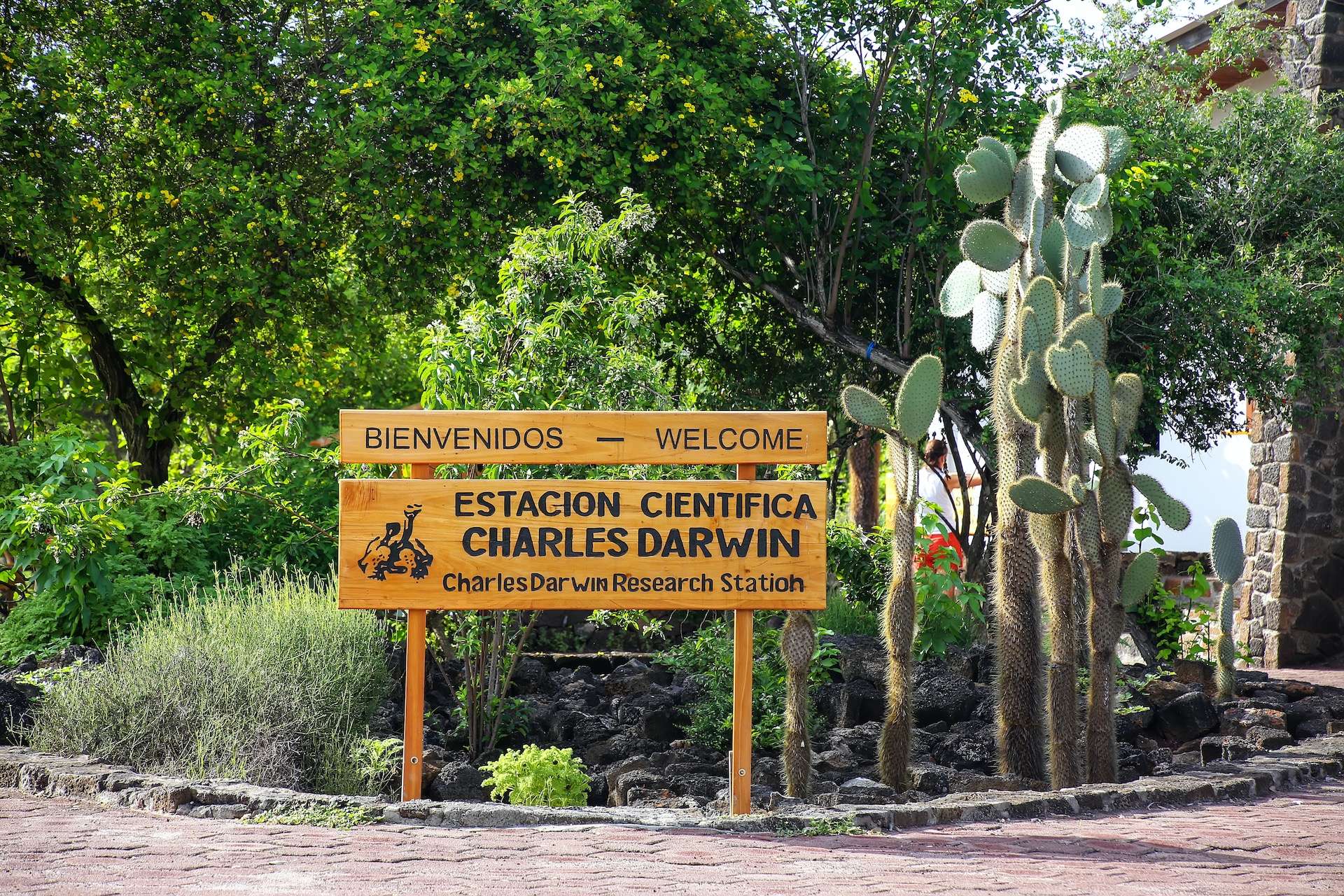
The work that the CDF and the Research Station do cannot be understated. They help steer measures to preserve marine species, including spiny lobsters, Galapagos penguins and hammerhead sharks. The latter under attack by foreign fleets because their fins are traditionally used as medicine in Asian countries.
The CDF and Research Station sponsor international scientists, partner with the national park on tortoise rewilding projects and work with organizations like the World Wildlife Fund (which helped fund construction of the Research Station) toward conservation in the islands as a whole.
Lindblad Expeditions continues to assist the CDF and its efforts with financial support and by serving on its board of directors. Sven Lindblad, the company’s vice-president, and many of the expert naturalists who work on the Galapagos fleet contribute as members of the CDF’s general assembly.
To date, Lindblad Expeditions and their clients’ financial contributions to the CDF’s work total $8.7 million. While many conservation projects dry up after the initial funding is gone, Lindblad Expeditions’ ongoing support has allowed much-needed efforts to continue in the present that likely would have stalled without private funding. Nat Hab Philanthropy has also financially supported this science-based conservation organization in its quest to protect one of the world’s most unique wildlife destinations.
Conservation Through Exploration
Together, Natural Habitat Adventures and Lindblad Expeditions strive to keep the spirit of exploration alive in the Galapagos Islands. Small ships set sail through the far-off island chain, following hand-crafted itineraries and led by expert guides. These journeys give explorers of all ages an experience that breathes new life into often-told travel stories, passed down from pirates, naturalists, explorers and stowaways.
The islands and the wildlife that call them home speak for themselves, creating new tales with each person who visits. Sea lions act as unofficial welcome crews on tropical beaches, blue-footed boobies waddle and point their beaks toward the sky in comical mating dances and humpback whales breach the open sea in gravity-defying displays of acrobatics. Each day delivers discoveries and reconnects those who experience the natural riches of the islands with the exotic world-at-large away from the hustle and bustle of modern life.
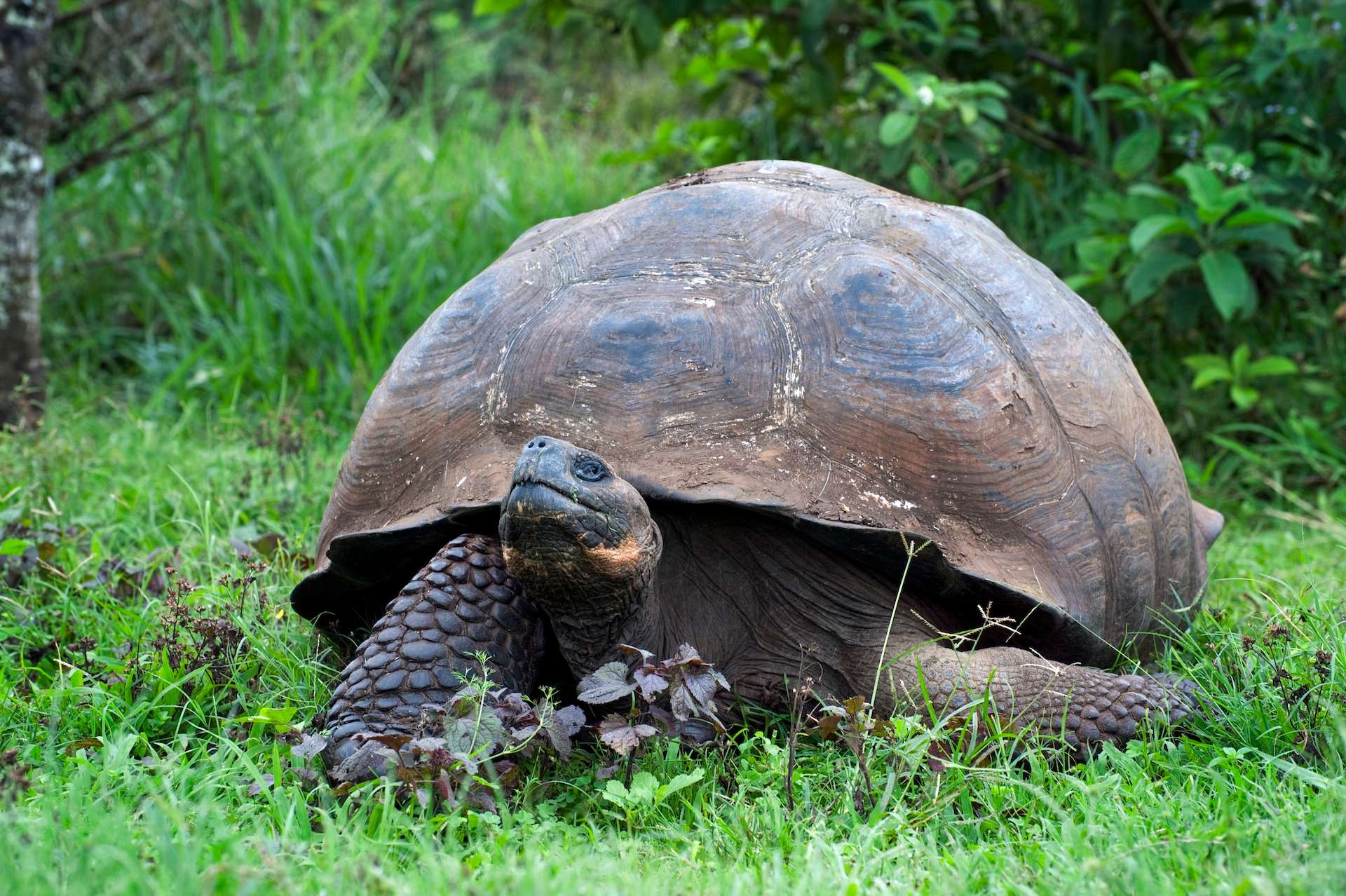
© Colby J Brokvist
Lindblad Expeditions and Nat Hab work with a team of expert guides on their ships and in Natural Habitat’s Tortoise Camp on Santa Cruz Island. Chosen for their knowledge and ability to personalize trips to individuals, these experts hail from all parts of the globe.
A common thread for each experience is that every group is accompanied by at least one native Galapagos guide. These residents are trained by the national park, with guidelines developed in collaboration with the Charles Darwin Foundation and the Research Station. Their experience gives a unique insight into the culture and the wildlife of the archipelago.
Combined, the pooled expertise of Natural Habitat Adventures, the history of Lindblad Expeditions, the depth of the knowledge of the native guides and the stunning landscapes of the Galapagos Islands present exceptional opportunities for adventure travelers. Experiences take you beyond ticking animals off a list and instead put you side by side with the people who live here, turning the islands into a home away from home for those who make the journey.
Feature photo: Artisan Daysi Patiño displays her work for Paper to Pearls © Lindblad Expeditions

